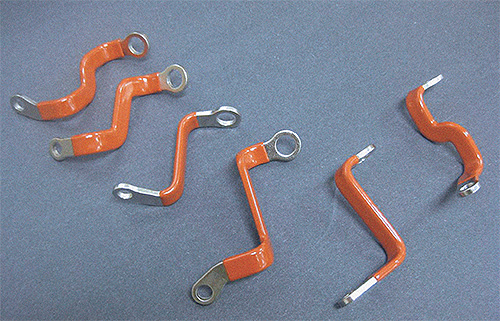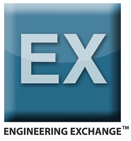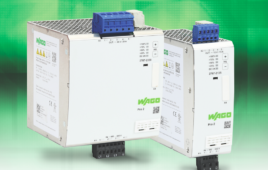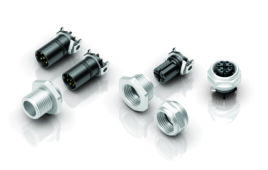By Robert Van Horn, President, Power Systems Division, Custom Electronics, Inc. Oneonta, NY
Epoxy powder coating is often used for motor components, switchgear, cable replacement, and other applications that use advanced materials.
In the pursuit of more efficient, reliable, and safer electrical assemblies and components, advanced materials can play a key role. For example, a high dielectric-strength epoxy powder coating can improve package density, airflow, build cycles, and thereby reduce system costs.
Many applications already use this insulating technology—from single conductors to multi-level assemblies. But, to maximize epoxy’s potential benefits, evaluate the many component preparation and powder application methods that are available, as well as the component geometry, where the powder will reside, and the tolerances that will appear for the most cost-effective solution.

Why epoxy powder coating?
Powder coating is not a new technology. Manufacturers embraced it in the early 1950s, primarily for commercial products. Today, due to advances in powder formulations and application methods, the well-tested and proven benefits of epoxy powder coating can be extended to a wider variety of electrical components.
Epoxy powder coating has a high dielectric strength, which is a necessary quality for electrical insulation to protect manufacturing people, service technicians, and customers who work on electrical systems. With the proper application technique, most parts can be uniformly coated to ensure a consistent insulation barrier. The material eliminates insulation cut-through from the high-voltage spikes that are often generated in cable systems. Prototype and short-run requirements, in particular, benefit from this insulating process by reducing the need for costly fixtures typically required to insulate or laminate multiple conductor assemblies. What’s more, the smooth and uniform finish that the epoxy provides is especially suited for protecting motor components, switchgear, cables, and other parts. Many powders used for these types of electrical insulation applications are rated as class B service coatings (266 F/130 C) and have a UL 94 V-0 flammability rating.
Making the most of epoxy powder coating
The first step in preparing the substrate involves surface conditioning, which includes thoroughly cleaning and drying the materials that receive the powder application. Passing the parts through a phosphate solution and a rinse usually remove all contaminants and ensures proper adhesion.
Before applying the epoxy, sharp edges on certain components must be “broken.” Breaking those sharp edges lets the material flow out more uniformly, which gives the component a more consistent dielectric strength. The process used depends, to an extent, on the size and geometry of the component. For instance, tumbling small parts is a common practice that breaks modest edges, but larger components require a more aggressive, manual de-burring operation. Sometimes, raw materials can be purchased with rounded edges, which eliminates some secondary operations.

The size and shape of the component and desired dielectric strength can dictate the application method used to apply the powder.
Once the surface is prepared, the coating can be applied in one of two ways: with a fluidized bed or an electrostatic spray. The fluidized bed process requires pre-heating the part, which then passes through a contained, suspended cloud of powder. The powder immediately adheres to the substrate and flows out. The last step is a full cure in an oven. Depending on time and temperature, powder thicknesses of 60 mils can be achieved without concern for geometrical features, although 10-30 mils is most common.
The second option, an electrostatic spray application, requires that an electrical charge be applied between the substrate and powder. Parts are typically racked and grounded, then moved into a spray booth. The epoxy powder is stored in a hopper and is fed through a sprayer nozzle that charges the powder to be deposited. The applied electrical current, and the velocity and volume of the powder are accurately controlled. Parts are not pre-heated in this process when only a few mils are needed, however, thicker deposits may require pre-heating. The thickness that can be uniformly deposited is limited, based on the part geometry and powder formulation. After the parts are sprayed, they enter a curing oven.
The size and shape of the component and its desired dielectric strength can dictate the method needed to apply the powder. When a component is relatively flat or has an open geometry where the powder must be evenly distributed, electrostatic spray is the preferred method. However, when a component has an unusual geometry where an electrostatic spray could not coat it uniformly, or it requires a thicker powder layer, a fluidized bed is preferred.

The most simplistic option for coating multiple conductor assemblies is to powder each conductor and fasten them together with an epoxy resin adhesive or non-conductive fasteners.
Candidates for epoxy powder coating
Epoxy coated electrical conductors are sometimes used in place of conventional flexible types of insulated cables. Preformed conductors can be made with smaller radius bends than flexible cables for more efficient use of space. First, a single copper or aluminum conductor is stamped and formed into one homogeneous component. By calculating the most appropriate width-to-thickness ratio needed for the required current, the airflow within the system can be significantly improved. In addition, crimped-on terminations can be eliminated to reduce voltage drops and component count, both of which improve reliability—especially in systems under heavy electrical load or mechanical vibration.

Edge conditioning is essential to reap the full benefits of the epoxy powder coating and fully protect the component.
Multiple conductor assemblies can also use the same principles to minimize the cost and lead time of special laminated assemblies. The most simple approach for insulating multiple conductor assemblies is to powder coat each conductor and fasten them together with an epoxy resin adhesive or non-conductive fasteners. This secures the components, and the single, modular assembly contains fewer parts. Alternatively, conductors can be fastened together with a sheet of dielectric insulation between conductors and a thin film of double-sided adhesive. These materials do not need heat to activate them, and they improve the system’s structural integrity and electrical performance.
Finally, in another method, a dielectric insulator is added between a typical two-conductor assembly. Replacing the powder coating between conductors with an insulator of high dielectric strength lowers the circuit inductance and increases the capacitance. A good rule of thumb for most applications: the closer the conductors, the better the results.
Custom Electronics
www.customelec.com
::Design World::
Filed Under: Adhesives • epoxies, Materials • advanced, ELECTRONICS • ELECTRICAL






Tell Us What You Think!